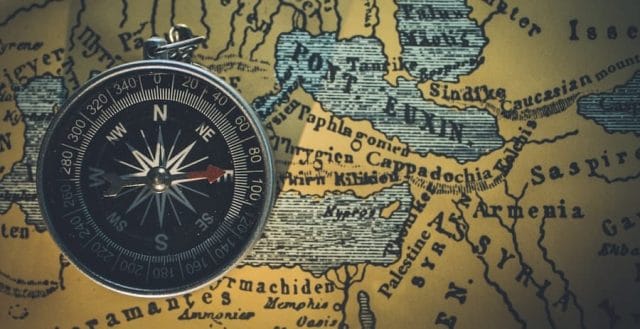Digital wayfinding is a contemporary approach to navigation that utilises digital technologies to provide users with efficient and effective guidance in indoor and outdoor spaces. Advanced techniques in Digital Wayfinding encompass a wide range of technologies, including digital signage, interactive maps, augmented reality, and beacon technology. These techniques are designed to enhance the user experience by providing real-time information, personalised recommendations, and seamless navigation.
By leveraging these advanced techniques, organisations can improve customer satisfaction, increase operational efficiency, and create a more engaging and interactive environment for users. Digital wayfinding solutions are designed to address the challenges of traditional wayfinding methods, such as paper maps, static signage, and verbal directions. These solutions leverage digital technologies to provide users with dynamic and interactive navigation experiences.
By integrating advanced techniques such as interactive maps and augmented reality, digital wayfinding solutions can deliver real-time information, personalised recommendations, and seamless navigation. This not only improves the user experience but also enables organisations to better understand user behaviour and preferences, leading to more effective decision-making and improved operational efficiency.
Summary
- Advanced techniques in digital wayfinding include interactive maps, augmented reality, and personalised experiences through digital technologies.
- Digital wayfinding solutions play a crucial role in navigation by providing real-time information and guidance to users.
- Implementing digital signage can enhance wayfinding by displaying dynamic and interactive content for users.
- Utilising interactive maps and augmented reality can revolutionise wayfinding by providing immersive and interactive navigation experiences.
- Personalised wayfinding experiences through digital technologies can cater to individual preferences and enhance user satisfaction.
The Role of Digital Wayfinding Solutions in Navigation
Enhancing the User Experience
By leveraging advanced techniques such as digital signage, interactive maps, and augmented reality, these solutions can provide users with real-time information, personalised recommendations, and seamless navigation. This not only improves the user experience but also enables organisations to better understand user behaviour and preferences, leading to more effective decision-making and improved operational efficiency.
Benefits for Organisations
In addition to improving navigation for users, digital wayfinding solutions also offer significant benefits for organisations. By providing users with dynamic and interactive navigation experiences, these solutions can enhance customer satisfaction, increase foot traffic, and drive revenue.
Informing Business Decisions
Furthermore, digital wayfinding solutions can help organisations better understand user behaviour and preferences, enabling them to make more informed decisions about space planning, marketing strategies, and operational efficiency. Overall, digital wayfinding solutions play a critical role in navigation by improving the user experience and delivering tangible benefits for organisations.
Implementing Digital Signage for Effective Wayfinding

Digital signage is a powerful tool for effective wayfinding, providing users with dynamic and interactive navigation experiences. By leveraging digital signage, organisations can deliver real-time information, personalised recommendations, and seamless navigation to users in indoor and outdoor spaces. Digital signage can be used to display interactive maps, directional information, promotional content, and emergency alerts, providing users with the information they need to navigate complex environments with ease.
This not only improves the user experience but also enables organisations to better understand user behaviour and preferences, leading to more effective decision-making and improved operational efficiency. In addition to improving navigation for users, digital signage offers significant benefits for organisations. By providing users with dynamic and interactive navigation experiences, digital signage can enhance customer satisfaction, increase foot traffic, and drive revenue.
Furthermore, digital signage can be used to deliver targeted promotional content and advertising, helping organisations to engage with users and drive sales. Overall, implementing digital signage for effective wayfinding is a powerful strategy for improving the user experience and delivering tangible benefits for organisations.
Utilising Interactive Maps and Augmented Reality for Wayfinding
Interactive maps and augmented reality are advanced techniques that can be utilised to enhance wayfinding experiences for users. Interactive maps provide users with real-time information about their surroundings, including points of interest, directions, and personalised recommendations. By leveraging interactive maps, organisations can deliver dynamic and interactive navigation experiences that improve the user experience and enable more effective decision-making.
Augmented reality takes this a step further by overlaying digital information onto the physical environment, providing users with a seamless and immersive navigation experience. By utilising augmented reality, organisations can deliver personalised recommendations, real-time information, and interactive content that enhances the user experience and drives engagement. In addition to improving navigation for users, interactive maps and augmented reality offer significant benefits for organisations.
By providing users with dynamic and interactive navigation experiences, these technologies can enhance customer satisfaction, increase foot traffic, and drive revenue. Furthermore, interactive maps and augmented reality can be used to deliver targeted promotional content and advertising, helping organisations to engage with users and drive sales. Overall, utilising interactive maps and augmented reality for wayfinding is a powerful strategy for improving the user experience and delivering tangible benefits for organisations.
Personalised Wayfinding Experiences through Digital Technologies
Personalised wayfinding experiences are made possible through digital technologies that leverage user data to deliver tailored recommendations and navigation guidance. By collecting and analysing user behaviour and preferences, organisations can provide users with personalised wayfinding experiences that meet their individual needs. This can include recommending specific routes based on user preferences, highlighting points of interest that are relevant to the user’s interests, and delivering real-time information that is tailored to the user’s context.
By leveraging digital technologies such as interactive maps, augmented reality, and beacon technology, organisations can create personalised wayfinding experiences that improve the user experience and drive engagement. In addition to improving navigation for users, personalised wayfinding experiences offer significant benefits for organisations. By providing users with tailored recommendations and navigation guidance, organisations can enhance customer satisfaction, increase foot traffic, and drive revenue.
Furthermore, personalised wayfinding experiences enable organisations to better understand user behaviour and preferences, leading to more effective decision-making and improved operational efficiency. Overall, leveraging digital technologies to deliver personalised wayfinding experiences is a powerful strategy for improving the user experience and delivering tangible benefits for organisations.
Integrating Beacon Technology for Seamless Digital Wayfinding

Enhancing the User Experience
Beacons can be used to deliver contextual information about points of interest, provide indoor positioning for accurate navigation guidance, and trigger personalised notifications based on the user’s location. By integrating beacon technology into digital wayfinding solutions, organisations can create seamless navigation experiences that enhance the user experience and drive engagement.
Benefits for Organisations
In addition to improving navigation for users, beacon technology offers significant benefits for organisations. By providing users with real-time information and personalised recommendations based on their location, beacon technology can enhance customer satisfaction, increase foot traffic, and drive revenue.
Improved Operational Efficiency
Furthermore, beacon technology enables organisations to better understand user behaviour and preferences, leading to more effective decision-making and improved operational efficiency. Overall, integrating beacon technology for seamless digital wayfinding is a powerful strategy for improving the user experience and delivering tangible benefits for organisations.
The Future of Digital Wayfinding: Innovations and Trends
The future of digital wayfinding is filled with exciting innovations and trends that promise to revolutionise the navigation experience for users. One of the key trends is the integration of artificial intelligence (AI) into digital wayfinding solutions, enabling more intelligent recommendations and predictive navigation guidance based on user behaviour and preferences. Another trend is the convergence of digital wayfinding with smart building technologies, creating seamless navigation experiences that are integrated with building systems such as lighting, HVAC, and security.
Additionally, advancements in wearable technology are opening up new possibilities for hands-free navigation experiences that leverage augmented reality and voice commands. In addition to these trends, innovations such as 3D mapping technology, indoor positioning systems (IPS), and advanced data analytics are shaping the future of digital wayfinding. 3D mapping technology enables more immersive and realistic navigation experiences that provide users with a better understanding of their surroundings.
IPS allows for more accurate indoor positioning that enhances navigation guidance in complex indoor environments such as shopping malls or airports. Advanced data analytics enable organisations to gain deeper insights into user behaviour and preferences, leading to more effective decision-making and improved operational efficiency. Overall, the future of digital wayfinding is bright with innovations that promise to deliver more intelligent, seamless, and immersive navigation experiences for users.
By embracing these trends and innovations, organisations can create a more engaging and interactive environment that enhances the user experience and delivers tangible benefits for both users and organisations alike.
If you are interested in learning more about digital signage in retail, you should check out the article “Digital Signage in Retail” from Advertise Me. This article provides valuable insights into how digital signage can be used effectively in retail environments to enhance the customer experience and drive sales. It complements the advanced techniques in digital wayfinding discussed in the main article, offering a comprehensive overview of the various applications of digital signage in different industries.
FAQs
What is digital wayfinding?
Digital wayfinding is the use of digital technology to provide interactive and dynamic navigation guidance to help people find their way in indoor and outdoor spaces such as airports, shopping malls, hospitals, and campuses.
What are advanced techniques in digital wayfinding?
Advanced techniques in digital wayfinding include the use of augmented reality, real-time data integration, personalised user experiences, and predictive analytics to enhance the accuracy and effectiveness of navigation guidance.
How does augmented reality enhance digital wayfinding?
Augmented reality overlays digital information onto the real world, allowing users to see navigation cues and directions superimposed on their physical surroundings, making it easier to navigate complex spaces.
What is real-time data integration in digital wayfinding?
Real-time data integration involves incorporating live information such as crowd density, traffic flow, and event schedules into digital wayfinding systems to provide users with up-to-date and relevant navigation guidance.
How does personalised user experience improve digital wayfinding?
Personalised user experiences in digital wayfinding involve tailoring navigation guidance based on individual preferences, such as preferred walking speed, accessibility needs, and language, to provide a more customised and user-friendly navigation experience.
What role does predictive analytics play in digital wayfinding?
Predictive analytics uses historical and real-time data to anticipate user behaviour and preferences, allowing digital wayfinding systems to proactively suggest routes, anticipate congestion, and provide timely navigation assistance.